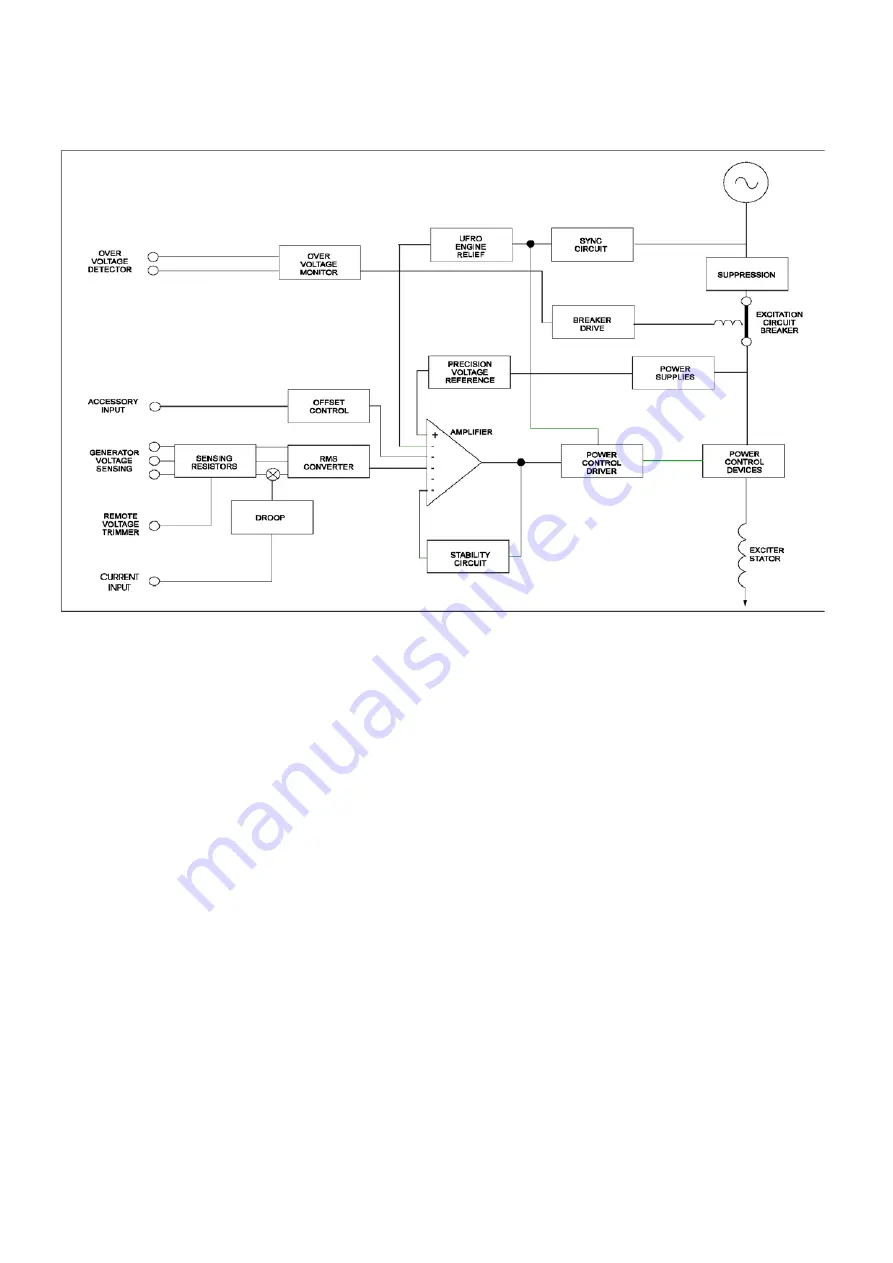
DESING DETAILS
The main functions of the AVR are:
Sensing Resistors
take a proportion of the generator output
voltage and attenuate it. This input chain of resistors includes
the range potentiometer and hand trimmer which adjusts the
generator voltage.
Quadrature Droop Circuit
converts the current input into a
voltage which is phase mixed with the sensing voltage. The
result is a net increase in the output from the sensing network
as the power factor lags, causing the reduction in excitation
needed for reactive load sharing of paralleled generators.
A trimmer allows control over the amount of droop signal.
RMS Converter
is a square law precision rectifier circuit that
converts the ac signals from the sensing networks into a
composite dc signal representing the mean squared value of
the waveform.
Offset Control
provides an interface between the AVR and
accessories.
Power Supply
components consist of zener diodes, dropper
resistors and smoothing to provide the required voltages for
the integrated circuits.
Precision Voltage Reference
is a highly stable temperature
compensated zener diode for comparison purposes.
Main Comparator/Amplifier
compares the sensing voltage to
the reference voltage and amplifies the difference (error) to
provide a controlling signal for the power device.
Stability Circuit
provides adjustable negative ac feedback to
ensure good steady state and transient performance of the
control system.
Power Control Driver
controls the conduction period of the
output device. This is achieved by pedestal and ramp control
followed by a level detector and driver stage.
Power Control Devices and Rectifier
vary the amount of
exciter field current in response to the error signals produced
by the main comparator.
Synchronising Circuit
provides a short pulse at the zero
crossing of each cycle and is used to synchronise the Under
Frequency Roll Off (UFRO) and power control circuits to the
generator cycle period.
UFRO
circuit measures the period of each electrical cycle and
reduces the reference voltage linearly with speed below a
presettable threshold. A light emitting diode (LED) gives
indication of underspeed.
Engine Relief
(load acceptance) circuit causes greater
voltage roll off (makes the volts/Hz slope steeper) to aid
engine speed recovery after application of a "block" load.
Overvoltage Monitor
continuously monitors the voltage at
the generator terminals and provides signals to trip a circuit
breaker to isolate power from the exciter and AVR if sustained
overvoltages occur. A one second timer is included in the
circuit to prevent operation during transient overvoltages
which are normal after load removal.
A miniature circuit breaker must be fitted to use the
Overvoltage Protection feature.




